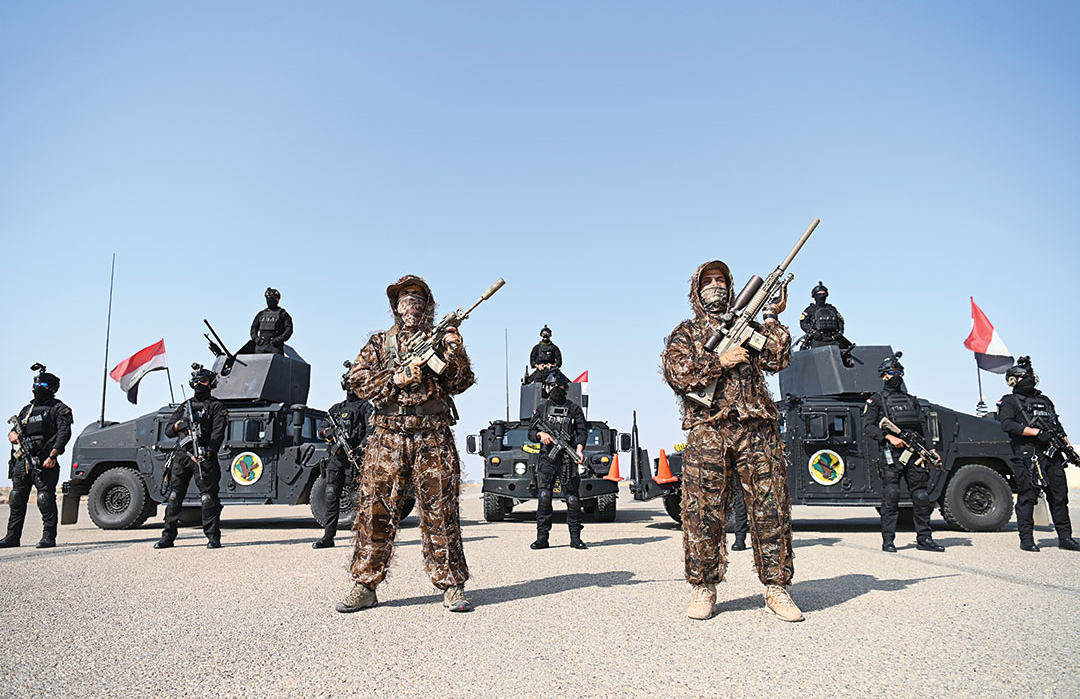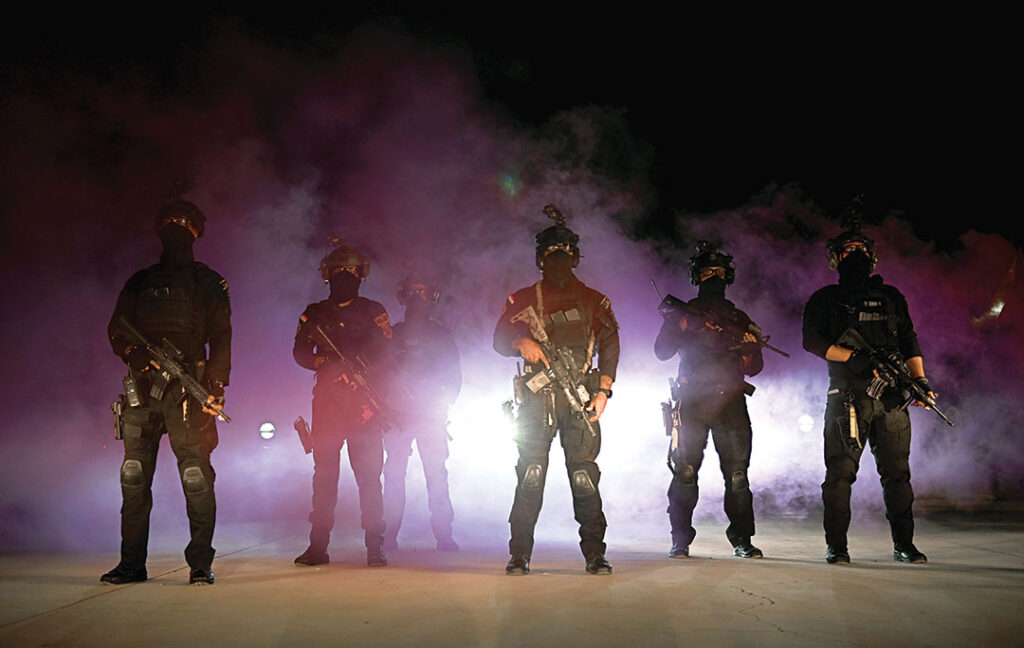Iraqi Prime Minister Mohammed Shia al-Sudani announced that the most wanted man in Iraq had been killed by a special operations unit of the Iraqi Counter-Terrorism Service.
The terrorist, Jassim Khalaf Dawood Ramidh Al-Mazrouei, considered in the organizational structure of Daesh to be the “governor” of Iraq, was killed in late 2024 along with eight of the group’s leaders who were hiding in a cave in the Hamrin Mountains.
With its difficult terrain, the region has provided remnants of the terrorist group with natural and well-concealed hideouts as well as the ability to move around and travel east of the provinces of Salah al-Din, Diyala and western Kirkuk to carry out terrorist operations targeting villages and areas adjacent to the Hamrin Mountains.

The tactical shift adopted by Daesh to conceal its once public leadership has restricted information available to the outside world. The terrorist organization’s security operations have also blocked the flow of information to its middle and lower leadership levels to avoid detection and targeting by Iraqi and international intelligence agencies.
At the same time, Daesh has enforced the highest levels of media and cyber secrecy to conceal the identities of its leaders and members. This made it more difficult for Iraqi security forces to identify targets and draw up a map of intelligence activities for Iraqi intelligence agencies, including the Iraqi Counter-Terrorism Service.
Operation Precious Catch came as a severe blow to the organization and psychology of Daesh members who had prioritized concealing the identity of their top leader in Iraq. Despite these efforts, the intelligence branch of the Counter-Terrorism Service managed to identify Al-Mazrouei, the location of his command base and his pattern of movement and communication through intelligence gathering, monitoring, tracking and analysis operations. So who was this man called “the precious catch”?
The terrorist, also known as Abu Abdul Qader, Abu Abdul Karim and Abu Hudhayfah, was born in 1975 in Salah al-Din Governorate. He was a member of the terrorist group al-Qaida in 2004 and pledged allegiance to Daesh in 2014. He was active in the organization’s terrorist operations as a “detachment emir” before taking charge of the so-called Northern Baghdad Province. He also oversaw the so-called Fallujah Province and the Emirate of Southern Salah al-Din as part of the organizational structure of Daesh gangs in Iraq.
Iraqi intelligence services have an extensive database on terrorist and extremist elements and members of groups that use violence to try to achieve their goals. Al-Mazrouei was arrested and questioned in early 2014, but escaped after Daesh occupied the Iraqi city of Tikrit.

The intelligence branch of the Counter-Terrorism Service, with support and intelligence from the international coalition, tracked the movement of the “precious catch.” Daesh was planning to move him from Iraq to the city of Raqqa in Syria and other cities in the region where he could hide for a while before returning to Iraq.
Iraqi intelligence continued to track and monitor the target’s movements with help from other security and intelligence services. His movements and potential locations were eventually narrowed down and put under human, technical and air surveillance.
Iraq’s Counter-Terrorism Service follows operational procedures and models to study and analyze terrorist targets, the networks formed by different groups, the type of threat they pose to Iraqi national security and the level of risk involved in operations to deal with identified targets.
After identifying the target, the agency’s command follows coordinated steps and secures operational requirements to carry out a mission to arrest or eliminate the target.

Lt. Gen. Karim Al Tamimi, head of the Iraqi Counter-Terrorism Service, led the execution phase on the target. He also oversaw the coordination between Joint Operations Command and air support units of the International Coalition to ensure the highest degree of operational security to carry out Operation Precious Catch and eliminate the terrorist commander and his leadership cell. Their location was determined using coordinates provided by the intelligence branch of the Counter-Terrorism Service and the Iraqi National Security Service. The information was then verified by reconnaissance and aerial surveillance by international coalition aircraft.
Operation Precious Catch proved that the Iraqi security services, led by the Counter-Terrorism Service, have the intelligence capacity and organizational capability to carry out difficult operations in complex geographical locations that Daesh gangs try to use as hideouts to avoid being caught by Iraqi forces. However, with the resolve and determination of men loyal to Iraq and its people, the mission was accomplished.

